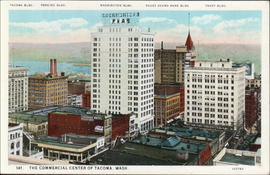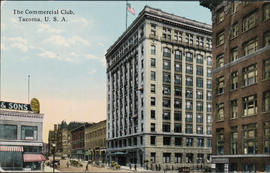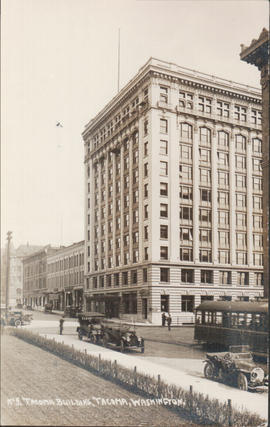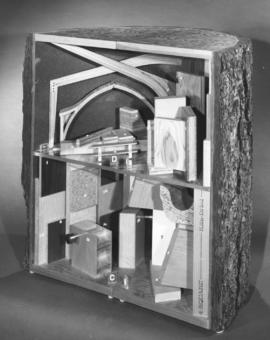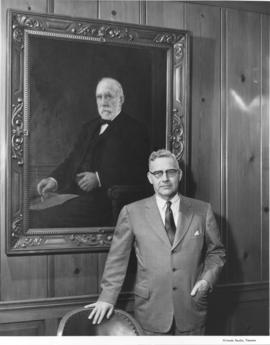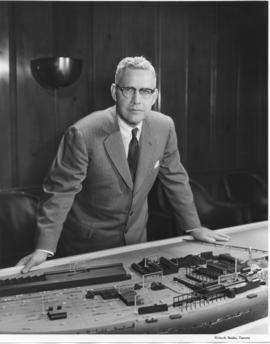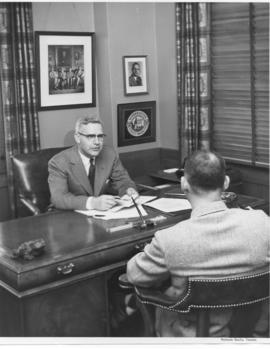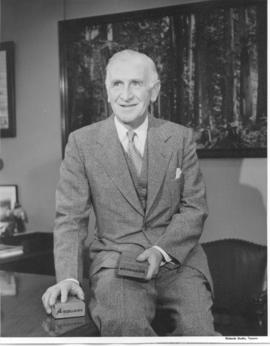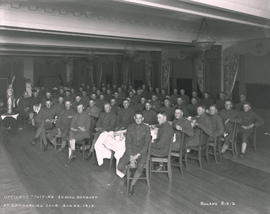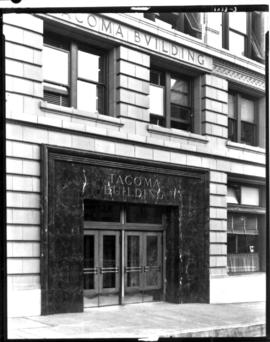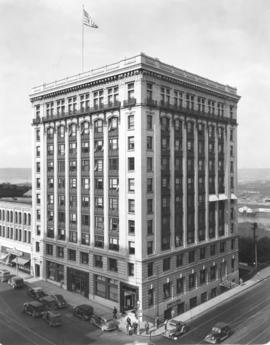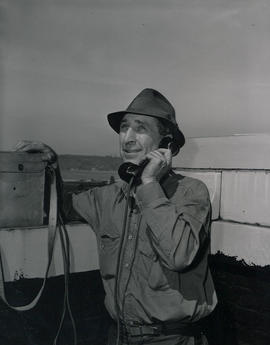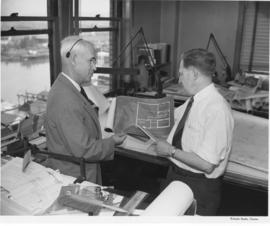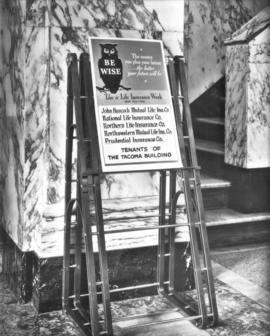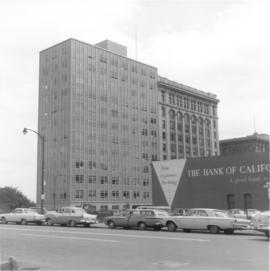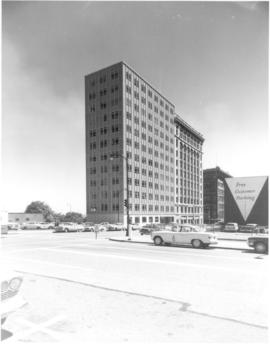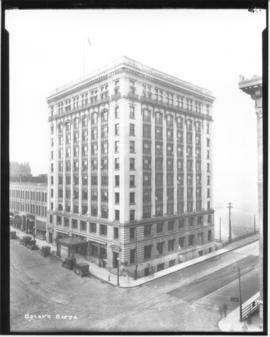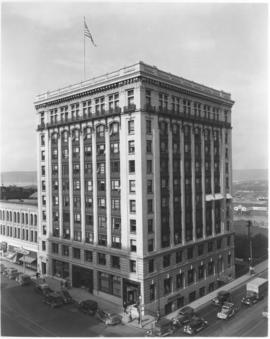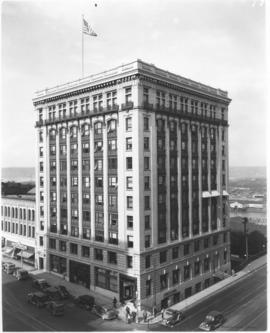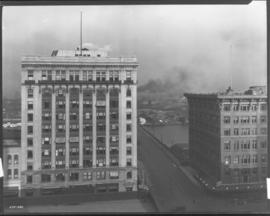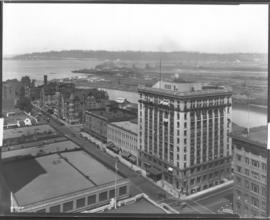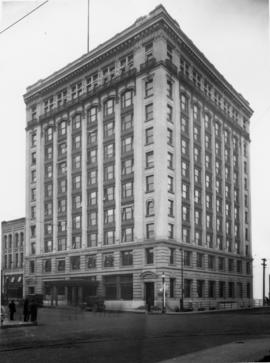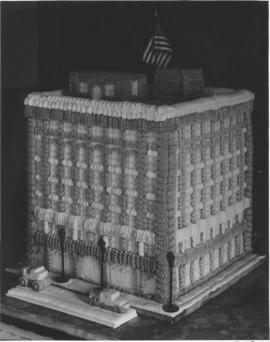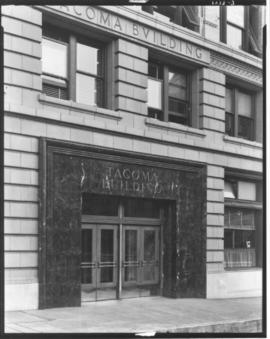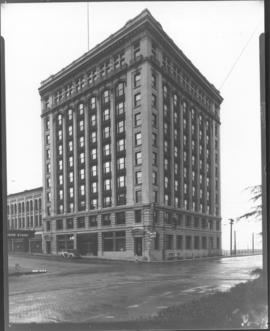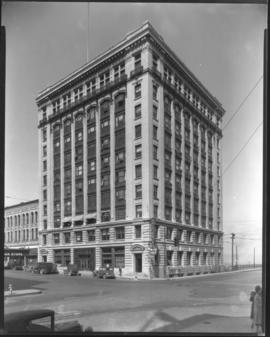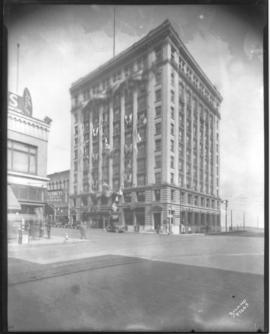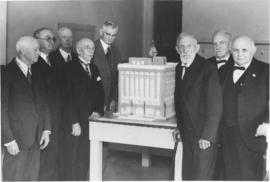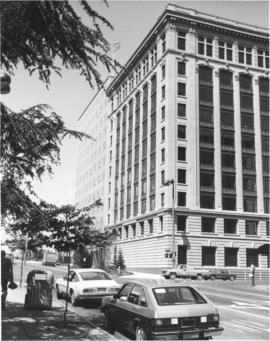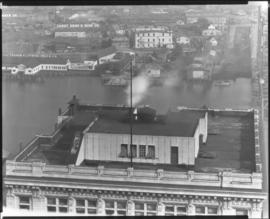Informal office photos of John Philip (Phil) Weyerhaeuser Jr., President of Weyerhaeuser Timber Company, with a model of the Everett facility. Phil Weyerhaeuser arrived in Tacoma in 1933 to take over the reins of the family timber business, after spending almost 13 years learning the profession in the Inland Empire. He ran the company until his death from leukemia December 8, 1956. He was a private, unpretentious and shy man, but he guided his company through the Great Depression, World War II and the New Deal. He imprinted the company with his vision that it must change in order to survive. No longer just a dealer in timberlands, the company diversified its interests and invested heavily in forestry as a renewable resource. In a 1955 passport application, he listed his profession as "lumberman," a modest assessment of his contributions to the industry. ("Phil Weyerhaeuser Lumberman" by Charles E. Twining)
Weyerhaeuser, John Philip; Weyerhaeuser Timber Co. (Tacoma); Lumber industry--Tacoma--1950-1960;
